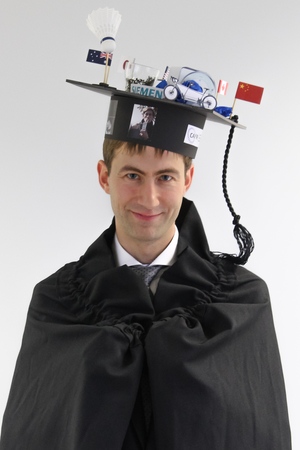Robert Grimm
Reconstruction Techniques for Dynamic Radial MRI
Abstract
Today, magnetic resonance imaging (MRI) is an essential clinical imaging modality and routinely used for orthopedic, neurological, cardiovascular, and oncological diagnosis. The relatively long scan times lead to two limitations in oncological MRI. Firstly, in dynamic contrast-enhanced MRI (DCE-MRI), spatial and temporal resolution have to be traded off against each other. Secondly, conventional acquisition techniques are highly susceptible to motion artifacts. As an example, in DCE-MRI of the liver, the imaging volume spans the whole abdomen and the scan must take place within a breath-hold to avoid respiratory motion. Dynamic imaging is achieved by performing multiple breath-hold scans before and after the injection of contrast agent. In practice, this requires patient cooperation, exact timing of the contrast agent injection, and limits the temporal resolution to about 10 seconds. This thesis addresses both challenges by combining a radial k-space sampling technique with advanced reconstruction algorithms for higher temporal resolution and improved respiratory motion management.
A novel reconstruction technique, golden-angle radial sparse parallel MRI (GRASP), enables performing DCE-MRI at simultaneously high spatial and temporal resolution. Iterative gradient-based and alternating optimization techniques were implemented and evaluated. GRASP is based on a single, continuous scan during free breathing, allowing for a simplified and more patient-friendly examination workflow. The technique is augmented by an automatic detection of the contrast agent bolus arrival and by incorporating variable temporal resolution. These proposed extensions reduce the number of generated image volumes, resulting in faster reconstruction and post-processing.
The radial trajectory also allows to extract a respiratory signal directly from the scan data. This self-gating property can be used for dynamic imaging in such a way that different, time-averaged phases of respiration are retrospectively reconstructed from a free-breathing scan. Automated algorithms for deriving, processing, and applying the self-gating signal were developed. The clinical relevance of self-gating was demonstrated by generating a motion model to correct for respiratory motion in a simultaneous positron emission tomography (PET) examination on hybrid PET/MRI scanners. This approach reduces the motion blur and, thus, improves tracer uptake quantification in moving lesions, while avoiding an increased noise level as it would be the case for conventional gating techniques.
In conclusion, the presented advanced reconstruction techniques help to improve the spatio-temporal resolution as well as the robustness with respect to motion of dynamic radial MRI. The effectiveness of the proposed methods was supported by numerous studies in patient settings, showing that non-Cartesian k-space sampling can be advantageous in a variety of applications.
